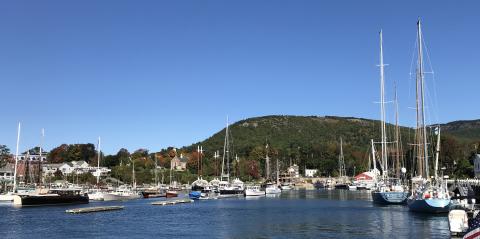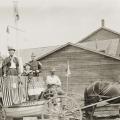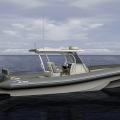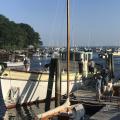Pilot project will provide local tide data
Tuesday, September 28th 2021

In partnership with Divirod, a data and technology company that produces tidal and water-monitoring sensors, US Harbors is launching a pilot program to monitor local tides and sea-level rise in Maine. The six-month program will include five sites, with a primary focus on communities in Penobscot Bay: Camden, Rockport, Rockland, Tenants Harbor, and Belfast.
NOAA currently maintains 200 live, observational tide stations in the United States, 50 of which are in the Great Lakes. These tide stations are highly sophisticated, and therefore expensive to implement. Because NOAA’s budget can’t support providing stations in every location, tide predictions for most towns are algorithmically derived (e.g., not based on actual observations). This gap in coverage makes it impossible for local communities to fully understand—and plan effectivelyfor—changes in storm surge trends and sea-level rise.
US Harbors, a national company based in Rockland, Maine, has been looking for affordable solutions to this issue, explained company president Anastasia Fischer.
During the trial, which was to begin in late September, each site will have access to hyper-local tidal data as well as a flood alert service. The objective is to determine solutions for long-term monitoring of sea-levels that are accessible to small municipalities, Fischer said.
“With rapidly changing coastal weather, rising sea levels, and increasing shoreline erosion, it is urgent that local communities have access to accurate water-level data for their specific location,” she said.
Divirod’s proprietary space-edge technology is not intrusive, requires minimal maintenance, and has been extensively correlated with NOAA sources, according to Fischer.
The stations, which are designed for simple installation, consist of a small box and antenna mounted on a pole or dock piling. They can be powered either by standard electricity or solar power. Data is collected from the stations via satellites and aggregated by Divirod, which then shares that data with the community through a dashboard and alert system.
The system allows the community to view, analyze, and monitor changes in sea level in their exact location, all with minimal investment and maintenance requirements.
The five pilot locations will receive tidal data reporting and flooding alert services from Divirod for 6 months free of charge. US Harbors will conduct several zoom-based check-ins with the participant communities during the pilot to solicit feedback on the program.
Divirod’s technology consists of two core components: An IoT device that acts as a passive radar data logger and cloud-based advanced analytics. The passive radar utilizes GNSS (GPS and other) satellite constellations as signal source to collect high-precision data about water and water content around the sensor location. This information is broadcast using LTE wireless network to the cloud, where the raw data is processed in real-time. This processing provides hyperlocal information about water levels, tidal changes, snow/ice, soil moisture, and precipitation for each sensor location.
Access to real-time, hyper-local water-level data can help everyone on the coast: individuals, businesses, municipalities, and state governments can use this data to understand local and regional water-level trends as they evolve, Fischer said.
“Most importantly, this type of hyper-local data can help all of us who live on the coast effectively plan for the impacts of storms and sea level rise, hereby making our coastal communities more resilient in the future.”
At the end of the six-month pilot in March, stakeholders will be asked for feedback on various aspects of the technology and data service. US Harbors and Divirod will also aggregate the tidal data across the five pilot communities to evaluate trends, and share those findings with the key players in the Maine state government and NOAA. US Harbors is also planning additional pilot projects in other parts of the country to test other tide monitoring technologies.















